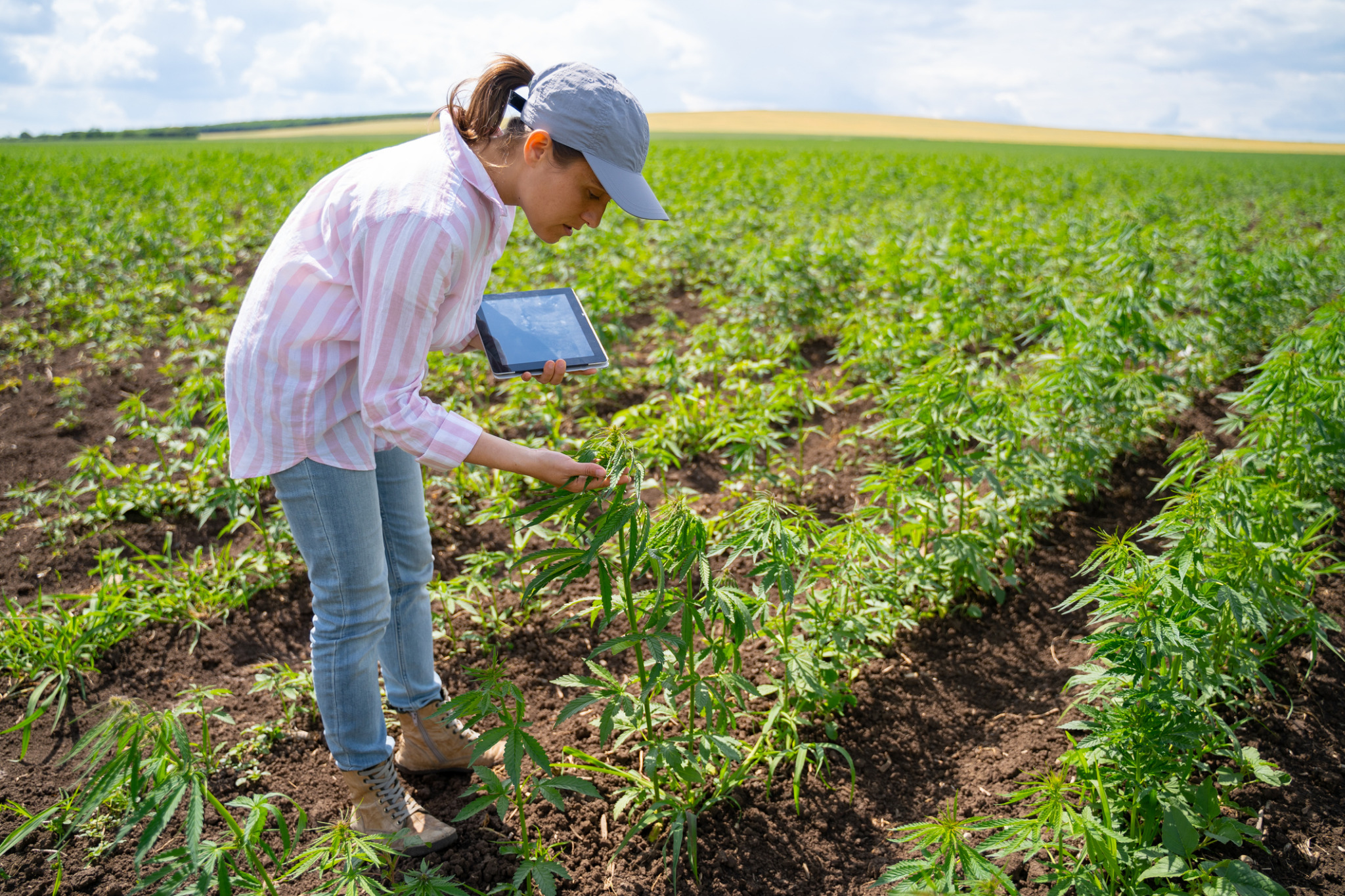
Clarity at the crossroads for cooperative hemp industry research
Posted 2 years ago
When faced with the critical decision of whether to continue investing resources, time and aspirations in a bid to create Australia’s first Hemp Cooperative Research Centre, the University of Southern Queensland sought Impact Innovation’s expert and objective input. Along with investigating other avenues, that decision was then made with clarity, confidence, and conviction.
-
3-stage process tailored specifically for UniSQ
-
A scientific approach to analysing and addressing feedback
-
4 clear recommendations for strategic action
The Challenge
Staking its solid reputation for innovative agricultural research in a bid to establish the largest hemp industry research centre in the southern hemisphere, the University of Southern Queensland (UniSQ) led a consortium of scientific and commercial partners seeking funding from AusIndustry’s Cooperative Research Centre (CRC) program.
Hemp is a high-yielding commodity crop that can be grown and manufactured into a wide range of medicines, food, and fibre products with sustainable practices. While Australia currently contributes less than one percent of production worldwide, it has the land, resources, supportive legislation and expertise to become a global leader in the hemp market.
A Hemp CRC would build the knowledge to create an innovative local hemp supply chain, one that would develop and service new industries and markets for medicinal, food, and fibre products. It would support local enterprise and secure sovereign capability for a scaled-up industry responsive to global needs.

Spearheading a bid to secure a decade of funding is a major undertaking. It involves many months of planning and negotiation with potential partners, who each have their own agendas as well as assets to bring to the venture. And that’s before the bid is submitted for review in a highly competitive, rigorous process.
In this instance, the Hemp CRC bid did not pass Stage 1. The outcome was disappointing and prompted the decision about whether to submit a revised bid in the next funding round.
UniSQ’s response to this challenge included engaging Impact Innovation to review and evaluate the original bid application, analyse the feedback provided by the CRC advisory committee, review the application by Peacock Consulting, and undertake many discussions with the research partners and key stakeholders.
“We needed a broader, outside look at what we were trying to achieve and how we were articulating that mission,” said Professor Gavin Ash, who represented UniSQ’s interests as the bid leader.
“At the same time, we needed a new lens to understand the cooperative research landscape as well as speak the language of both researchers and commercial growers.
“The hemp industry in Australia is currently the domain of smaller enterprises, and many of them would be working with academics for the first time.
“Based on what we’d heard about Impact Innovation from other R&D colleagues, we believed they would be that trusted eye to help us see what potential value could be generated from further investment in this project,” Professor Ash said.
The Solution
Impact Innovation’s 3-stage review of the original Hemp CRC application and the feedback it generated from the assessors identified the strengths of UniSQ’s industry-led position, interpreted the appraisals, and revealed objective insights to support decision-making regarding a possible re-bid.
The review looked at best practice strategic, structural, and tactical elements. These included the expression of the information (bid writing), how the CRC would operate (organisation), its industry responsiveness (strategy), and the overall value proposition.
Following the first stage of analysing the bid documents and promotional communications, Impact Innovation participated in a workshop for the bid stakeholders facilitated by Peacock Consulting. This activity dissected and discussed the feedback against AusIndustry’s assessment criteria (second stage).
In the final stage, Impact Innovation collated and connected the findings and learnings from the earlier stages to formulate recommendations. Rather than focusing on areas of deficiency, this stage considered practical ways to strengthen and enhance UniSQ’s competitiveness for a CRC re-bid and/or other industry grant initiatives.
“Impact Innovation’s approach was exactly what we needed, in what they did and how they went about it,” said Professor Ash.
“Angus Crossan and Crighton Nichols were personable and willing to listen, and they didn’t impose their views, which made it easier to face the reality of possibly letting go of a project that had consumed so much of our attention for more than a year… or gearing up to do it all again.”
“We needed a broader, outside look at what we were trying to achieve and how we were articulating that mission.”
The Outcomes
With a measured and moderated approach to evaluating the potential return on investment, UniSQ gained the clarity to make an informed decision: it stepped aside from leading a second bid.
Without the leadership of a larger partner leveraging its experience and resources to transform the vision of the Hemp CRC into reality, the predominately ‘small business’ nature of the other collaborators meant the 10-year commitment required might not be sustained. Subsequently, the consortium bidding for CRC funding disbanded.
While these might appear to be ‘negative’ outcomes for the aspirations of Australia’s emerging hemp industry, the merit of other outcomes included:
- The review process enabled UniSQ to make choices based on validated insights about where to direct its research priorities and resources.
- With Impact Innovation’s report, UniSQ has a new option to consider when deciding to pursue other research collaborations with emerging industries, including future CRC bids.
- The researchers involved now have industry connections that didn’t exist before, and the hemp growers experienced what might be involved when working with research centres.
Professor Ash described it as an “undervalued kind of bravery”.
“We were able to reach the point of making a decision confidently, taking all stakeholders into account, because robust discussions were allowed,” he said.
“Being able to draw on Impact Innovation’s experience of working with RDCs [Rural Research Development Centres], and their ability to mediate on both research and commercial concerns, meant we had a safe environment to discuss ideas and practise real collaboration.”
Learn about other innovative research led by UniSQ’s Institute for Life Sciences and the Environment:
- https://www.unisq.edu.au/research/institutes-centres/ilse
- Facebook: ilseunisq
- X: ILSE_UniSQ
- Instagram: ilse_unisq
Images: supplied by UniSQ
Need expert help with articulating the direction for your next R&D venture? Your first step starts here.